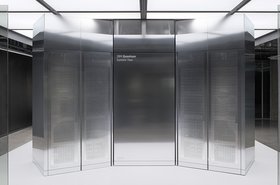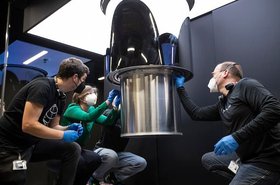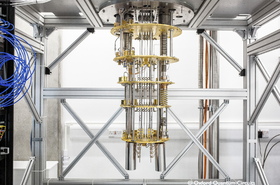We’re not there yet, but we could be on the cusp of quantum computers being deployed in data centers alongside live customer hardware. But with a step-change in computing on the horizon, data center operators should start looking at the reality of deploying quantum computers in live environments.
While still a nascent technology, quantum computers have the potential to revolutionize computing.
Through complicated quantum mechanics, these systems potentially offer a route for supercomputing power on a scale never seen before in a much smaller and more efficient footprint than traditional silicon-based systems (known as classical computing).
Wholesale and colocation data center providers may be long used to hosting traditional supercomputers. Increased power and cooling requirements aside, even the most powerful supercomputing hardware is still designed and built to conform to today’s data center environments when it comes to size, shape, operation, and maintenance.
Quantum computing, however, represents an entirely different paradigm and the foibles of quantum technologies mean just asking about racks and density won’t cut it.
Out of labs and into data centers
Today, almost all quantum computers sit within dedicated science labs.
However, as quantum computers grow in power, interest in deploying these systems is growing. Enterprises are looking at using them in their operations for real-world applications, while quantum startups are looking to deploy systems in data centers close to potential customers’ existing IT hardware. Neither yet have experience of what that means in the real world outside of a controlled lab environment.
Creating the environments necessary for quantum effects to take place requires wildly different technologies and supporting infrastructure than classical computing – yet still have to be located close to classical systems in order to allow the flow of data from one to the other. This presents challenges to companies who have never had to accommodate such novel technology in live commercial spaces – often in halls occupied by multiple customers.
Due to limitations of physics, the powerful quantum computers that might surpass today’s classical supercomputers – and offer what is known as quantum supremacy – are much larger and are highly unlikely to be able to fit within traditional form factors data center operators are used to handling. The sensitive and precise nature of the technology means quantum computers must be far away and isolated enough from existing systems not to suffer interference from existing IT hardware, but still be close enough to integrate with these systems.
Many quantum computers rely on supercooling via liquid nitrogen and hydrogen-3 – two difficult-to-handle and potentially hazardous liquids that have never been previously used within data center environments. The housing for supercooled systems is also not what you’d call rack-friendly; the largest Kide system from supplier Blufors can cool around 1,000 qubits: the system is just under three meters in height and 2.5 meters in diameter, and the floor beneath it needs to be able to take about 7,000 kilograms of weight.
Other quantum technologies rely on high-powered lasers and sensitive optical technologies. Though not as tall or heavy as supercooled systems, these optical table-based machines have much larger footprints and need to be mechanically isolated.
The quantum opportunity for colos
The change is coming. Oxford Quantum Circuits has already deployed two quantum computers in colocation data centers; one in the UK in a Cyxtera [since renamed Centersquare] facility outside London, and an Equinix facility in Tokyo, Japan. The Cyxtera/Centersquare deployment – located in a former tape library – required modifications to the ceiling, safety measures, and operation procedures.
OQC has said it is looking at more colo deployments in the future, and now the dam has broken, more quantum companies will no doubt look to follow suit.
GPU-heavy AI cloud providers like CoreWeave have been major leasers of data center capacity over the last 12 months as the demand for AI-centric hardware spikes. Many operators are now offering combined liquid- and air-cooling facility designs to accommodate these designs, while a few are going all-in on immersion cooling.
A similar model opportunity for colocation/wholesale providers could well pop up once quantum computers become more readily available with higher qubit counts and production-ready use cases. But quantum computers will need their own accommodations on top of the requirements of high-density AI, often in the same building.
Quantum computing providers are all offering access to quantum computers hosting in their on-premise labs through the cloud. But as demand for access increases and these companies begin building more systems at greater scale, they could well need more dedicated space.
Some quantum providers told DCD they are already in discussions with some colocation/wholesale providers and exploring what dedicated space in a colo facility may look like. Others have told us they’d rather rely on the uptime expertise of established providers than try to learn how to build and operate SLA-bound facilities themselves on top of building physics-bending computers.
If they don’t want to be left behind, data center operators should start looking at, and understanding, the unique requirements these potentially disruptive machines will have on current operations; how they are currently accommodated; and the issues that will need consideration in the near future if these machines are adopted at any significant scale.
Quantum computers in the data center
-

Qubits come of age in the data center
What happens when you put a quantum computer alongside conventional systems?
-

Longer coherence: How the quantum computing industry is maturing
Academics with screwdrivers are making way for operations engineers and SLAs
-

When data centers meet quantum computers
What happens when quantum computers arrive in data centers?




